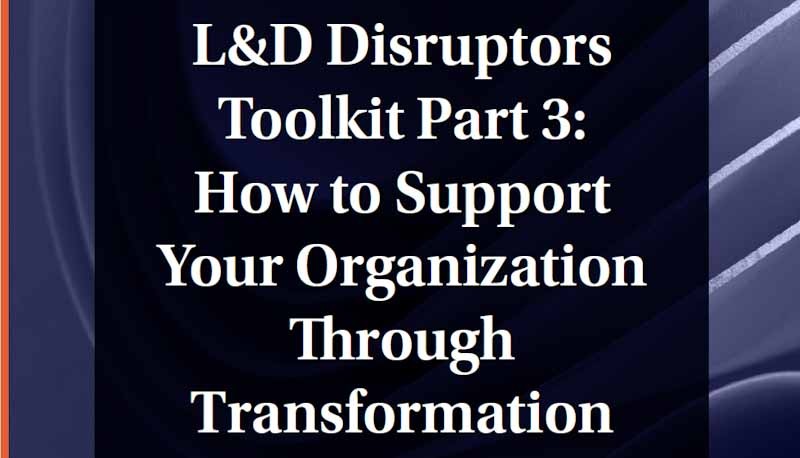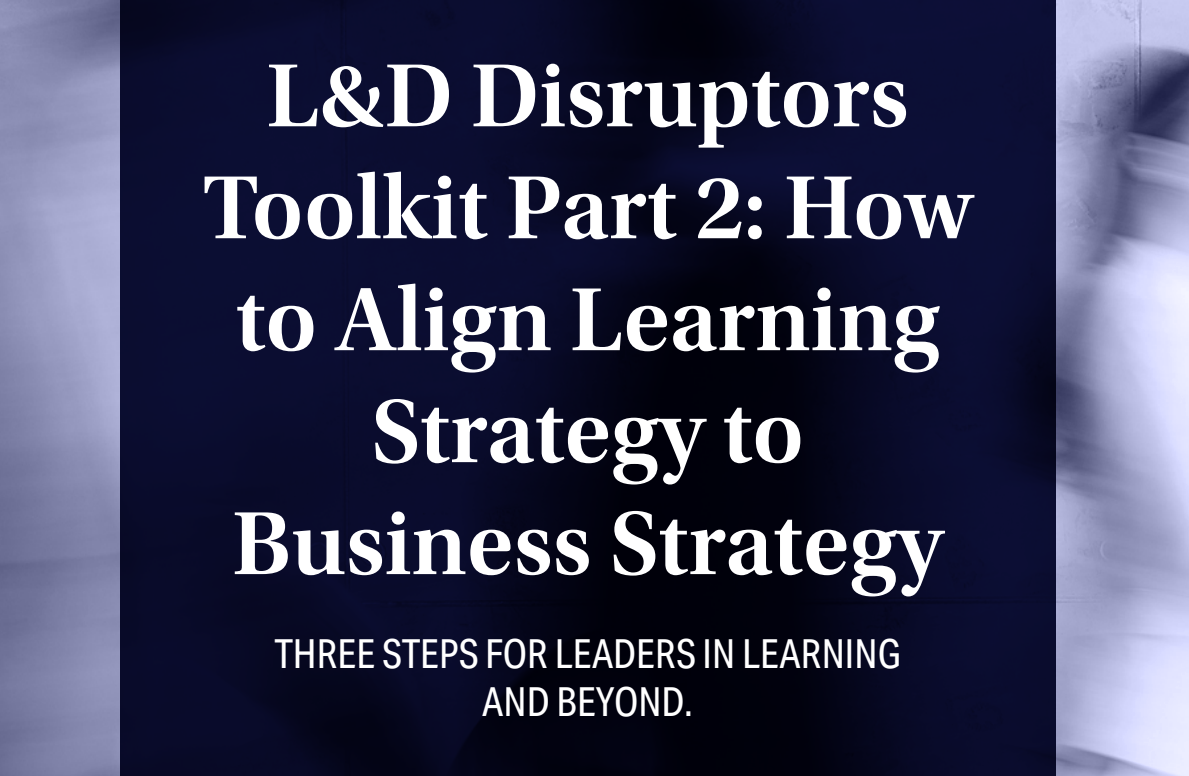What are the measures of L&D Disruptors and how would you measure up?

Exploring how the respondents to Nomadic’s L&D Disruptor Quiz rate themselves, it’s clear that they are not just shaping the future of learning—they are redefining it.

Change––and the need to adapt to that change––is a constant throughout most careers. For our learners and their companies to thrive, they’ll need to adjust to different technologies, ways of working, management styles, and sets of responsibilities many times during their work lives.
Sometimes, this change comes gradually. But often (particularly in recent years!), it comes quite suddenly, leaving companies and their people scrambling to keep up.
One of the most important things we can do as learning leaders is help our people develop the skills and capabilities they need to adapt quickly to change.
This is why Nomadic has long been focused on transformation: it’s the best way to help our clients accelerate growth and compete in a landscape filled with uncertainty. While the specifics of a given program or piece of learning content might be focused on digital transformation, or adapting to new processes, or deeping creativity, it’s always––at a more fundamental level––about ensuring learners can thrive amidst change.
Let’s dive into three ways learning leaders can support their organizations through transformation, informed by our more than a decade of work with leaders disrupting L&D across industries.
A quick note: This post is part of our series on L&D disruptors, or the leaders who are disrupting learning and approaching it in innovative ways, whether or not they sit in the learning function themselves. This post is just a preview. Download your free copy of the full guide here!
You can also check out part one of this toolkit, about how to sell L&D internally, part two of this toolkit, about how to align learning strategy to business strategy, as well as our post defining the L&D disruptor.
There’s a very practical reason that transformation is so complex for many businesses: quite simply, they’re very, very large.
Shepherding thousands of people through any kind of change is difficult. Add to that the nuances of everyday life within a business––coordinating different functions, dealing with competing priorities, unexpected factors in the economic or regulatory environment––and you can begin to see why even something like adopting a relatively simple new process becomes a major undertaking.
This is the reason that we typically work with Fortune 500 companies to develop learning solutions that help them tackle transformations. A startup or small business may be able to navigate change in a relatively nimble manner. But for enterprises operating on a global scale, a thoughtful approach to transformation that drives alignment between large, distributed teams is an absolute must.
In our experience, L&D disruptors are particularly adept at understanding the role learning can play in promoting this alignment. Designed well, learning can connect globally distributed teams, enhance collaboration, deepen ties between team members both within and across functions and geographies, and smooth the adoption of new processes.
But these disruptors also understand that not every learning experience is up to this task. We’ve all been there: clicking our way through learning that feels like isolated drudgery. It doesn’t inspire much of anything, much less connection with teammates around the world.
One L&D disruptor, an SVP at a global financial services firm, emphasizes the importance of “dialing into the relational aspects of learning”: that is, focusing on the social spark that makes learning deeply effective, rather than simply the content “on the page.”
Here’s a list of learning experience features to keep in mind to ensure that your learning effectively connects and aligns large teams––an essential factor in any successful transformation.
This is just a sneak peek of our full guide to supporting your organization through transformation as an L&D disruptor. For the full guide, including tips for which capabilities to prioritize in your learning strategy, and a checklist for learner interviews, download your free copy here!

Exploring how the respondents to Nomadic’s L&D Disruptor Quiz rate themselves, it’s clear that they are not just shaping the future of learning—they are redefining it.

In this post, we explore the second of five “tools” every learning disruptor has in their toolkit. This one is all about aligning learning strategy to business strategy.

Discover how Nick's experiences, growth, and evolving role highlight the dynamic and rewarding environment at Nomadic. Join us as we delve into the insights and reflections from Nick's milestone anniversary, showcasing the impact of long-term commitment in a fast-paced, ever-changing industry.